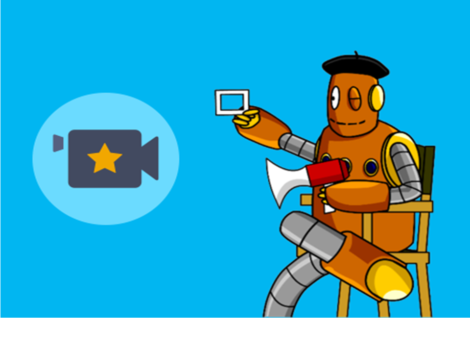Maybe I'm the last one on this bandwagon, but recently I logged into Brainpop and was shocked by all the new (to me) features. Years ago, BrainPop was a good tool for launching topics or reviewing concepts. But, boy have they added some incredible tools!
In this post, I'm going to highlight some of the features that I thought were particularly intriguing. However, I'm not going to go into the details of how to use these tools, because the Brainpop Educators Site does it far better than I ever could. It also provides screencasts, student resources, and lesson ideas.
One disclaimer, to use many of these tools, you do need a personal account, and this video shows you how to do that. (You'll need an educator code, which can be gotten from your account administrator). Your students also join your classroom so they can participate in these activities. This also allows you to and create assignments and track the students' progress.
And now.... here are the top 5 tools:
5) Make a Map-
 Students can create concept maps while (or after) watching the
Students can create concept maps while (or after) watching theBrain Pop videos. The students can even take screenshots of the videos as their watching to add to their concept map.
4) Newsela
Each subject area is automatically linked to a related article in Newsela. You can assign the news article to an entire class, or choose certain students within the class. For now, it looks like all of the students initially will get the same reading level as a default, but you can instruct them to choose a different level once the have opened the article.
3) Brain Pop Challenge-
Brain Pop Challenge allows the students to review the material from Brain Pop in a variety of ways (concept mapping, diagram labeling, matching, multiple response, sequencing, Venn diagramming, and highlighting). These challenges can be used as a review or they can be used as an assessment. When they are used as a review the student is given automatic feedback so they can correct their responses. When they are used as an assessment, the responses are stored in the teacher's classroom.
2) Creative Coding-
After learning about the Brainpop content, the students can use coding to create a meme, doodle augmented reality, stop motion animation, or newscast. All of these projects are done in Java script and brainpop provides PDF step by step tutorials to help the students. This would be a great extension activity for students!

And the # 1 feature (at least in my opinion!)
1) Make a Movie -
In my opinion, one of the coolest features of BrainPop now is the ability for students to make a movie. There are many (but not all) topics that allow students or teachers to use the information that they have learned (through BrainPop or elsewhere), and create a fun resource for others to learn from. Again, Brainpop provides many different resources to help the students and teachers learn how to create.
Odds and ends
BrainPop has definitely evolved into an even more robust learning resource. There are countless aspects that can be useful in the classroom, too many to mention here. But, when you to the BrainPop educators page, be sure to take a look at its ability to filter lessons by learning standards (even down to the state level), digital citizenship resources, and FYI high interest articles.
BrainPop has done a fantastic job of taking a good resource and making it even more exciting! I'm looking forward to trying some of these ideas out with our students.

